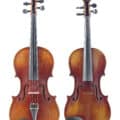May 6, 2011
Can You Hear Me Now?
I grew up listening to the fabled sound of The Philadelphia Orchestra. As musicians, we work diligently to achieve a certain sound on our instruments or with our voices. Here’s the rub. If one is performing on an acoustic instrument, the room in which we’re performing is part of our sound.
In the early 80’s I took a teenage piano student to a pair of orchestral concerts. The first featured the New York Philharmonic at Avery Fisher Hall performing the Mussorgsky-Ravel Pictures at an Exhibition. After the bombastic final movement, Jeremy turned and said: “How come my stereo can play louder than the New York Philharmonic?”
The second featured the American Symphony Orchestra playing Tchaikovsky’s Symphony No. 5 in a pre-renovated Carnegie Hall. Our seats were in the ‘nosebleed’ balcony at Carnegie where Jeremy was ‘blown away’ by the sound of this incredible work. . .as one would have hoped he would have been by Pictures.
While there are many opinions regarding ideal acoustics in a concert space, the following are properties I look for as a performer and as an audience member:
Enough decay time to permit the blending of sounds and ease of playing. The acoustics of a cathedral may be so ambient that clarity is completely lost. But if a space is utterly dead, all sounds are unblended and one has to struggle to shape every musical phrase. It’s far better to play and listen in a space in which sound decays over time rather than stops dead in its tracks!
Some natural boosting of low frequencies. If a concert hall does not slightly favor the bass end of the spectrum, performances sound ‘ungrounded’ with the high frequencies dominating. Some people, without knowing why, would say that a hall that favors bass frequencies sounds “rich” to them – as opposed to the sound of a hall that does not, which they might describe as “thin” or “too bright.”
Loudness. If 110 musicians are playing the final moments of Respighi’s Pines of Rome as loudly as they humanly can, audience members throughout the concert hall should physically feel vibrations in their bodies! With the help of electronic amplification, people can and do experience this phenomenon at rock concerts or from the car next to them while stopped at traffic lights, or even from their own home ‘stereo’ to quote Jeremy.
Can we really expect people who have grown up with electronically enhanced music to come on more than one disappointing occasion to listen to a large symphony orchestra that – because of the room they are playing in – cannot physically excite them with the very SOUND of their playing?
Financially, this is one the most difficult matters to address regarding shrinking audiences at symphony orchestra concerts. Do we build another hall after spending one hundred million or more dollars to build the one we’re in? Move to another location? Go back to the old concert hall – if it hasn’t already been torn down?
Short of gutting and rebuilding our new concert halls, what can we do if we do not have the luxury of performing regularly in an optimal acoustical setting like that of the Vienna Musikverein or the Amsterdam Concertgebouw? I think we must come to grips with at least one option, albeit abhorrent to purists. Sophisticated computerized electronic enhancement is now available to ‘fix’ our performing art centers and give them the desired acoustical properties. It may be the only cost-effective way to address this issue.








